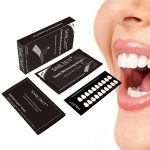Why Whitening Strips Cause Teeth Sensitivity: Understanding the Science Behind the Pain

Teeth whitening strips have become increasingly popular in recent years as a quick and affordable way to achieve a brighter smile. However, many users may experience sensitivity and discomfort during or after using these strips. Understanding the science behind this pain can help users make informed decisions about their dental health and avoid unnecessary discomfort. The active ingredient in most whitening strips is hydrogen peroxide, a powerful bleaching agent that can penetrate tooth enamel and break down stains. While this process can effectively whiten teeth, it can also cause damage to the tooth’s protective layer and expose the nerve endings inside. This can lead to pain and sensitivity, particularly when consuming hot or cold foods and drinks. Additionally, overuse or misuse of whitening strips can further damage the enamel and increase the risk of sensitivity.
Tooth sensitivity is a common dental problem that affects millions of people worldwide. It is a condition where the tooth becomes extremely sensitive to hot or cold temperatures, sweet or sour foods, and even cold air. This sensitivity occurs when the protective layer of the tooth, called enamel, becomes thin and wears away. The underlying layer, called dentin, is exposed, which contains tiny nerve endings that become irritated and cause pain. The pain can range from mild discomfort to sharp, shooting pain that can be debilitating. Whitening strips can exacerbate tooth sensitivity by further thinning the enamel and exposing the dentin layer, causing pain and discomfort.
Teeth whitening strips are a popular at-home teeth whitening solution that promise to brighten your smile in just a few weeks. These strips are typically made of a thin, flexible plastic material that is coated with a special gel containing hydrogen peroxide or carbamide peroxide. To use them, you simply apply the strips to your teeth and leave them on for a specified amount of time each day. While they can be an effective way to whiten your teeth, they can also cause sensitivity due to the chemical agents used in the whitening gel. Understanding the science behind this pain can help you make an informed decision about whether or not teeth whitening strips are right for you.
How Whitening Strips Work

Whitening strips are a popular and effective method for brightening teeth. They work by using a bleaching agent, usually hydrogen peroxide or carbamide peroxide, to penetrate the enamel and break down the stains on the surface of the teeth. The strips are made of a thin, flexible material that adheres to the teeth and keeps the bleaching agent in contact with the surface for a set amount of time, usually around 30 minutes. The active ingredients in the strips work by oxidizing the stains on the teeth, causing them to break down and become lighter in color. As a result, the teeth appear whiter and brighter. However, the bleaching agents in whitening strips can also cause teeth sensitivity. This is because the peroxides in the strips can penetrate the enamel and reach the dentin, which contains tiny tubules that lead to the nerve of the tooth. When the nerve is exposed to the bleaching agent, it can cause a sharp pain or discomfort. This sensitivity is usually temporary and can be managed by using desensitizing toothpaste or reducing the frequency of whitening treatments. Understanding how whitening strips work can help you make an informed decision about whether or not to use them and how to use them safely and effectively.
The active ingredients in whitening strips are typically hydrogen peroxide or carbamide peroxide, both of which work by penetrating the enamel and breaking down the stains that have accumulated over time. Hydrogen peroxide, in particular, is a powerful oxidizing agent that can help to lift even the most stubborn of stains. However, this process can also cause tooth sensitivity, as the peroxide can irritate the nerves and cause them to become inflamed. In some cases, this sensitivity can be quite severe, and may even require the use of painkillers or other medications to manage. If you are considering using whitening strips, it is important to be aware of the potential risks and to take steps to minimize your chances of experiencing sensitivity or other adverse effects.
Hydrogen peroxide and carbamide peroxide are common ingredients in teeth whitening products. They work by penetrating the enamel and breaking down stains and discoloration, leaving behind a brighter, whiter smile. However, the downside to these ingredients is that they can also cause teeth sensitivity. The peroxides can penetrate the tooth’s dentin layer, where the nerves are located, causing irritation and discomfort. This is why it is important to use whitening products as directed and to consult with a dentist if sensitivity persists.
The Science Behind Teeth Sensitivity
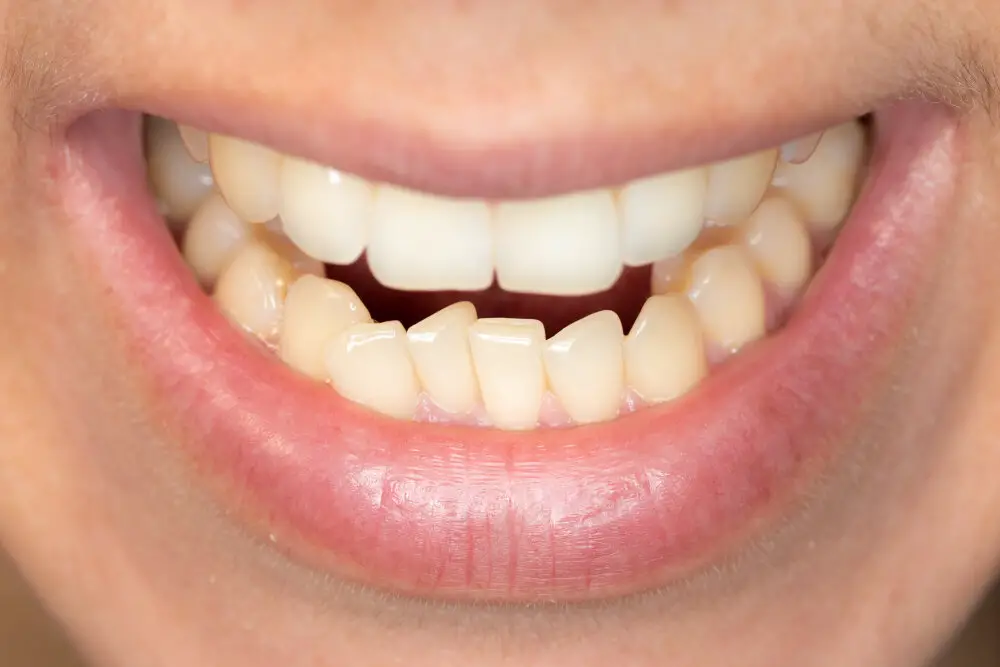
Tooth sensitivity is a common problem that affects millions of people worldwide. It is a condition that causes discomfort or pain when the teeth are exposed to certain stimuli such as hot or cold temperatures, sweet or acidic foods, or even brushing. The sensitivity occurs when the enamel layer of the tooth is worn down, exposing the underlying dentin layer, which contains tiny tubules that connect to the nerve of the tooth. When these tubules are exposed, they allow external stimuli to reach the nerve, causing pain or discomfort. Tooth sensitivity can be caused by various factors, including gum recession, tooth decay, or aggressive brushing. However, one of the most common causes of tooth sensitivity is teeth whitening. Teeth whitening strips contain a bleaching agent, usually hydrogen peroxide or carbamide peroxide, which penetrates the enamel layer of the tooth and breaks down the stains. However, in the process, the bleaching agent also breaks down the proteins in the dentin layer, which can lead to the exposure of the dentinal tubules. This exposure can cause tooth sensitivity, as external stimuli can now reach the nerve of the tooth. In addition, the bleaching agent can also cause dehydration of the teeth, which can further exacerbate the sensitivity. It is important to note that tooth sensitivity caused by teeth whitening is usually temporary and can be managed with desensitizing toothpaste or other home remedies. However, if the sensitivity persists or becomes severe, it is best to consult a dentist.
Teeth sensitivity is a common problem that affects many people, and it occurs when the protective layer of the teeth, known as enamel, wears away, exposing the underlying layer of dentin. Dentin is made up of tiny tubules that connect to the nerve endings in your teeth, and when it becomes exposed, it can cause pain and discomfort when you eat or drink hot or cold foods and beverages. Whitening strips can cause teeth sensitivity because they contain chemicals that penetrate the enamel and bleach the dentin, causing it to become more porous and sensitive. In addition, the prolonged use of whitening strips can also weaken the enamel, making it more susceptible to damage and erosion. It is important to be aware of the potential risks of using whitening strips and to consult with your dentist before starting any teeth whitening treatment.
Enamel and dentin are two essential components of our teeth that play a crucial role in sensitivity. Enamel is the outermost layer of our teeth, which serves as a protective shield against external factors such as cold, heat, and acidic substances. It is the hardest and most mineralized tissue in our body, which makes it highly resistant to wear and tear. Dentin, on the other hand, is the layer beneath the enamel that contains microscopic channels called tubules. These tubules connect the outer surface of the tooth to the inner pulp, which contains nerve endings and blood vessels. When the enamel wears away, the tubules become exposed, and the nerve endings become more susceptible to external stimuli. This can lead to tooth sensitivity and discomfort, especially when consuming cold or hot foods and drinks.
Sensitivity is a complex concept that can manifest in different ways depending on the context. In the case of teeth sensitivity caused by whitening strips, we are dealing with a type of pain that occurs when the nerves in the teeth are exposed to external stimuli such as hot or cold foods. However, sensitivity can also refer to emotional sensitivity, which relates to how easily someone is affected by external events or emotional triggers. There is also sensory sensitivity, which is related to how sensitive someone is to various sensory inputs such as noise, light, or touch. Understanding the different types of sensitivity is crucial to address individual needs and provide the right solutions to alleviate discomfort and improve quality of life.
The Connection Between Whitening Strips and Sensitivity
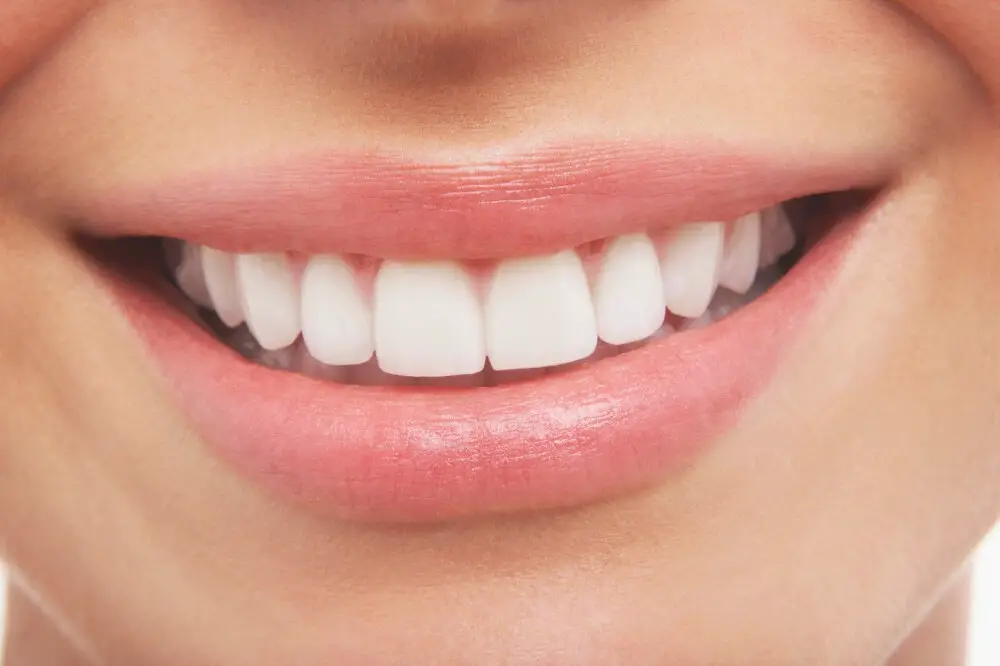
Whitening strips are an easy and affordable way to achieve a brighter smile, but they can also cause tooth sensitivity. The connection between whitening strips and sensitivity lies in the way they work. Most whitening strips contain hydrogen peroxide or carbamide peroxide, which are bleaching agents that penetrate the enamel and break down the molecules that cause discoloration. However, this process can also weaken the enamel and expose the dentin, which contains tiny tubules that lead to the nerves of the teeth. When the dentin is exposed, hot, cold, and sweet stimuli can trigger pain and discomfort, known as tooth sensitivity. Tooth sensitivity caused by whitening strips can be temporary or permanent, depending on the sensitivity level of the individual and the duration of the whitening treatment. Temporary sensitivity usually occurs during the treatment and subsides shortly after it ends. However, if the enamel is severely damaged, the sensitivity may become permanent, and the individual may need further dental treatment to repair the damage. Therefore, it is essential to use whitening strips as directed and avoid overusing them. It is also advisable to consult a dentist before using any whitening products to determine the best treatment plan for your dental health.
Whitening strips are widely used by people to achieve a brighter smile, but they can also cause teeth sensitivity. The reason for this is that the active ingredient in most whitening strips is hydrogen peroxide, which can penetrate through the enamel and reach the dentin layer of the tooth. The dentin layer contains microscopic tubules that connect to the nerve endings of the tooth, and the hydrogen peroxide can irritate these tubules, causing a temporary sensitivity. Additionally, the prolonged use of whitening strips can weaken the enamel and expose the dentin, leading to even more sensitivity. It is important to use whitening strips as directed and to take breaks between treatments to avoid exacerbating sensitivity.
The active ingredients found in most whitening strips, like hydrogen peroxide and carbamide peroxide, can potentially cause damage to both enamel and dentin. These ingredients penetrate the tooth’s surface, breaking down the stains and discoloration that cause a lack of whiteness. However, this also means that they are breaking down the protective layer of enamel that covers the tooth, leaving it vulnerable to damage and sensitivity. Additionally, since the dentin layer beneath the enamel is more porous, it is more susceptible to damage caused by the active ingredients in whitening strips. Therefore, it is essential to use these products carefully and as directed, to avoid causing lasting damage to your teeth.
Teeth sensitivity is a common side effect of using teeth whitening strips. The duration of sensitivity can vary depending on the individual and the severity of the sensitivity. In general, the sensitivity can last for a few days to a few weeks. This is because the whitening strips penetrate the enamel of the teeth, exposing the dentin layer, which is more sensitive. The dentin contains tiny tubules that lead to nerve endings, which can be stimulated by the peroxide in the whitening strips. As the enamel remineralizes, the sensitivity should gradually subside. However, if the sensitivity persists or is severe, it is important to consult a dentist for advice.
Minimizing Sensitivity When Using Whitening Strips
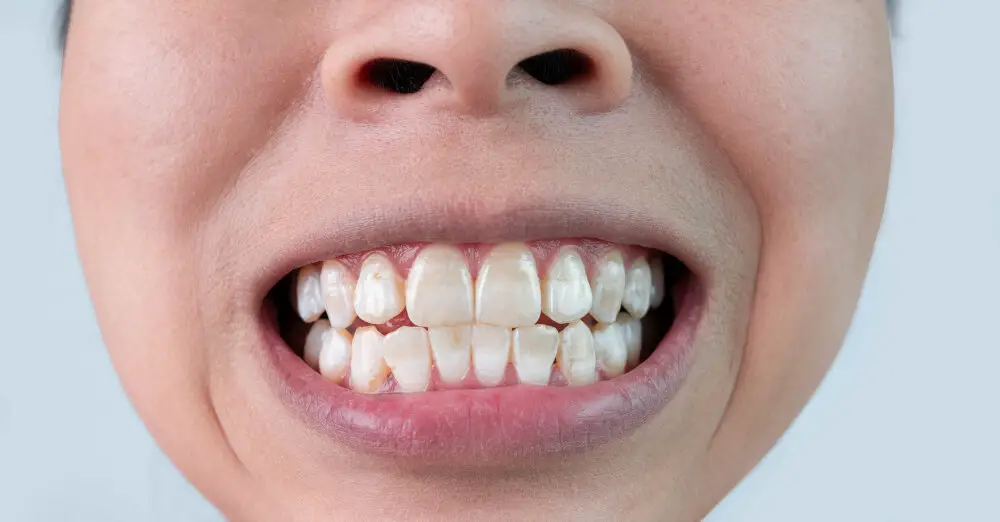
Using whitening strips is a popular way to achieve a brighter smile. However, many people experience tooth sensitivity when using these products. Tooth sensitivity is caused by the active ingredient in whitening strips, which is typically hydrogen peroxide or carbamide peroxide. These ingredients penetrate the enamel and dentin of the teeth, causing the nerves inside to become irritated. This irritation can cause a sharp pain or discomfort when eating or drinking. Fortunately, there are several ways to minimize sensitivity when using whitening strips. One way is to use a toothpaste formulated for sensitive teeth before and after using the strips. This can help to desensitize the teeth and provide relief from any discomfort. Another way to minimize sensitivity is to use the strips less frequently or for a shorter amount of time. For example, if the instructions recommend using the strips for 30 minutes, try using them for only 15 minutes at a time. Additionally, taking a break from using the strips for a few days can also help to reduce sensitivity. By following these tips, you can still achieve a brighter smile without experiencing the discomfort of tooth sensitivity.
When using whitening strips, sensitivity can be a common side effect. However, there are some tips that can help reduce this discomfort. Firstly, it is recommended to use strips that have a lower concentration of hydrogen peroxide, as this can be a major contributor to sensitivity. Additionally, it is important to not leave the strips on for longer than the recommended time, as this can also increase sensitivity. Using a toothpaste designed for sensitive teeth can also help alleviate discomfort. Finally, spacing out the use of whitening strips and giving your teeth time to rest between treatments can also help prevent sensitivity. By following these tips, you can enjoy the benefits of a brighter smile without the pain of sensitivity.
There are various products that can help alleviate sensitivity caused by teeth whitening strips. Toothpaste specifically formulated for sensitive teeth is a popular choice, as it contains ingredients that help to desensitize the nerves and protect the enamel. Mouthwashes designed for sensitive teeth are also available, which can help to soothe any inflammation or discomfort. For more severe sensitivity, fluoride treatments from a dentist may be necessary. In addition, avoiding extremely hot or cold foods and drinks, practicing good oral hygiene, and using a soft-bristled toothbrush can all contribute to reducing sensitivity.
Teeth whitening strips have become a popular way to achieve a brighter smile, but they can also cause tooth sensitivity. The reason for this is due to the active ingredient in the strips, hydrogen peroxide, which penetrates the enamel and dentin layers of the tooth, causing dehydration and exposure of the nerve endings. This can result in a sharp, painful sensation when consuming hot or cold foods and drinks. However, there are ways to minimize sensitivity, such as using a lower concentration of hydrogen peroxide, using desensitizing toothpaste, and spacing out whitening treatments. It’s important to understand the science behind teeth sensitivity to make informed decisions about oral care.
In conclusion, while whitening strips are an effective way to achieve a brighter smile, it’s crucial to use them correctly and minimize the risk of sensitivity. Start by choosing a brand that is reputable and safe, and avoid using the strips more frequently than recommended. Additionally, it’s essential to maintain good oral hygiene practices, including brushing and flossing regularly, to ensure that your teeth and gums remain healthy. Finally, if you do experience sensitivity, take a break from using the strips and give your teeth time to recover. By following these tips, you can enjoy the benefits of whitening strips while minimizing any discomfort or pain.
Conclusion
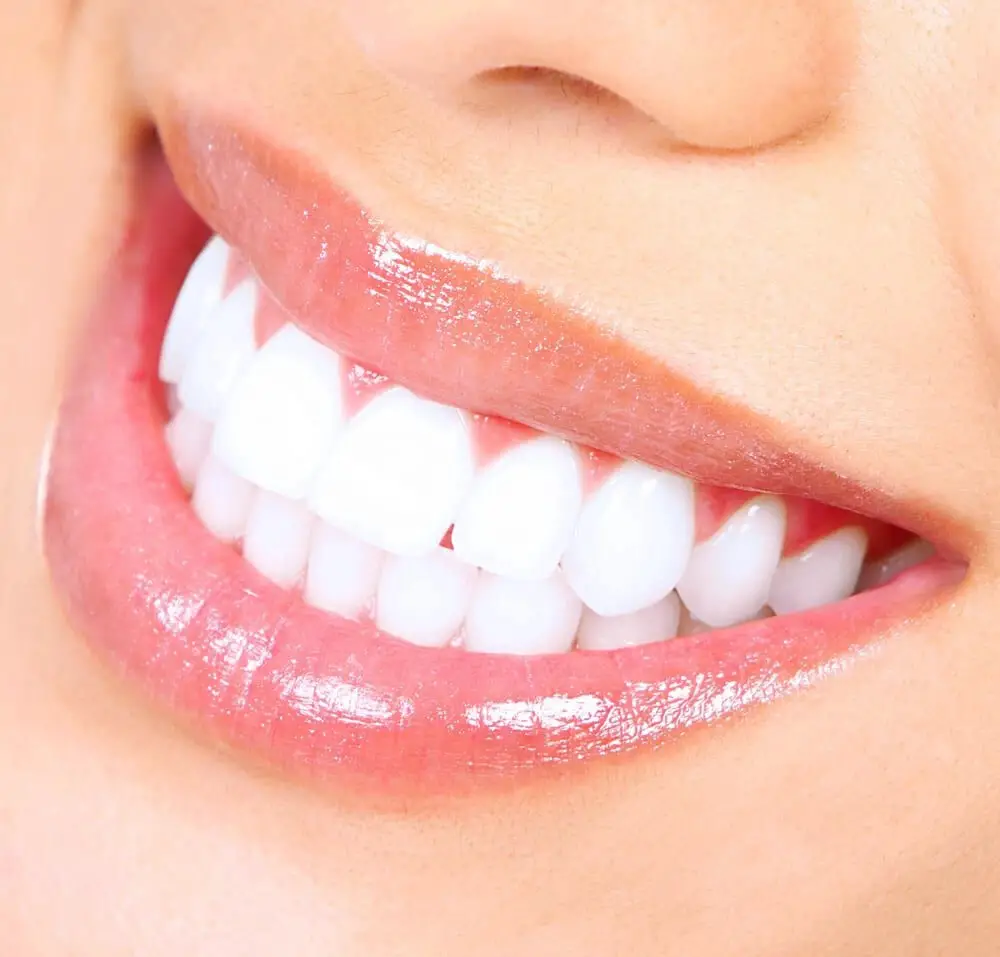
In conclusion, the science behind the pain caused by whitening strips is a complex process that involves the breakdown of enamel and the exposure of dentin, leading to heightened sensitivity. While the pursuit of a brighter, whiter smile is understandable, it is important to weigh the potential risks and benefits before using whitening strips. It is recommended to consult a dental professional before using any teeth whitening products and to follow instructions carefully, as overuse or misuse can exacerbate sensitivity and lead to further damage. Ultimately, maintaining good oral hygiene and regular dental check-ups can help prevent the need for harsh whitening treatments and protect the long-term health of our teeth.


